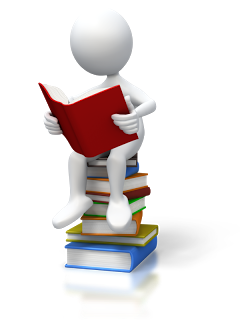Lesson Seven - Literary Terminology
| Site: | MoodleHUB.ca 🍁 |
| Course: | English Lang Arts 30-2-RVSO |
| Book: | Lesson Seven - Literary Terminology |
| Printed by: | Guest user |
| Date: | Thursday, 18 December 2025, 7:48 PM |
Description
.
Introduction
 Lesson Seven - Literary Terminology
Lesson Seven - Literary Terminology
Duration - 2 blocks (2 x 80 min + homework)
"Fortune favours the prepared mind" - Louis Pasteur
In the first six lessons of this unit, all of the notes for ELA 30-2 have been presented.
It is not possible to commit all of the literary terms to memory, but memorizing a few of them will serve you well as you move through the quizzes in this course and most certainly on Part B of your diploma exam.
Lesson
Literary Terms Worth Memorizing . . .
The list of literary terms below are ones that should be part of your vocabulary – you will hear and read the terms (and examples) used on a daily basis.
The vast majority of these terms are guaranteed to appear on the genre exams in this course, as well as on Part B of your ELA diploma exam. In a study conducted on twenty sittings of Part B exams, “irony” was found on 100%, “allusion”, “imagery”, “metaphor”, and “tone” on 75-99%, “context”, “contrast”, “mood”, “paradox”, “purpose”, “setting”, “symbol”, and “theme” on 50-74%, with the remainder appearing 25-49% of the time.
Of course, there are certainly other terms which will appear on Part B of the diploma exam, but in relatively low frequency. Committing these terms to memory will serve you well on the exam and in your daily life.
|
alliteration |
foreshadowing
hyperbole imagery irony juxtaposition metaphor mood narrator oxymoron paradox |
personification
purpose setting simile speaker symbol theme thesis tone understatement |
Assignment
(100 marks)
Open a new PowerPoint document. Label it E302U1L7surname
In this document, complete the assignment outlined below.
Submit this assignment using the Assignment Folder for U1L7 literary terms
Use your notes from the Poetry Lesson (U1L4 to help you with this assignment, as definitions and examples are provided in abundance!!)
For EACH of the 30 terms below, provide the following information on a PPT slide:
term
definition
example
graphic/photo to illustrate the example. You are creating a study aid to use for the exams in this course and on Part B of your diploma exam. Under pressure, having a graphic to recall an example which may then help you to recall the definition of the term, would be most useful!
Use the definitions and examples that are in your notes to help you create your PPT!!
|
alliteration |
foreshadowing
hyperbole imagery irony juxtaposition metaphor mood narrator oxymoron paradox |
personification
purpose setting simile speaker symbol theme thesis tone understatement |
THEORY EXAM (100 marks)
Watch this Multiple Choice
This password-protected Theory Exam will be written online, administered and supervised by your distributed learning supervisor.
You will read two pieces of non-fiction, two poems, and a short story, answering 41 questions on the five texts.
Be sure to review the PowerPoint you have just created!
Conclusion
This assignment in this lesson will have helped to prepare you for the Theory Exam. Your PowerPoint is a valuable set of study notes to which you should refer prior to writing any reading comprehension exam in this course AND when preparing for Part B of your diploma exam.